Flashcards and Answers – AP Human Geography Exam Review
Unlock all answers in this set
Unlock answersquestion
absolute location

answer
The actual space a place occupies on Earth's surface
question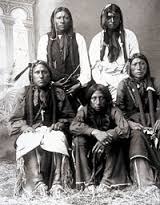
acculturation

answer
The change that occurs within a culture when it adopts a practice from another culture
question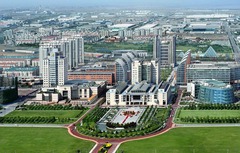
agglomeration effects

answer
The cost advantages (external economies) for an individual company gained by locating near similar industries or companies
question
agribusiness

answer
Commercial agriculture in which large corporations own and operate various steps in the production process with an emphasis on profit
question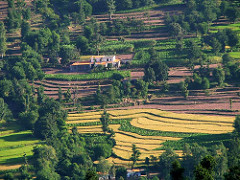
agricultural density

answer
The number of people living in rural areas per unit of agricultural land
question
alliance

answer
An association among countries for the purpose of mutual defense or trade
question
animism
answer
The belief that spirits (including ancestral) live within objects such as animals, rivers, rocks, trees, and mountains
question
antecedent boundary
answer
A boundary placed before the cultural landscape was developed
question
artifact
answer
Tangible pieces of material culture
question
assimilation
answer
The process in which immigrants become totally integrated into the host culture
question
backwash effect
answer
The negative impact to the peripheral region sometimes caused by increased flows of labor and capital into a nearby high-growth region
question
basic sector
answer
Goods and services produced for individuals outside the urban work area
question
bid rent curve
answer
The concept that the concentric circles in Burgess's concentric zone model are based on the amount people are willing to pay for land in each zone
question
biotechnology
answer
The application of scientific techniques to modify and improve plants, animals, and microorganisms to enhance their value
question
built environment
answer
The material culture of an environment
question
carrying capacity
answer
The number of people an area can support on a sustained basis
question
central business district (CBD)
answer
The business area found at the center of every older central city and urban area
question
central place theory
answer
A theory developed by Walter Christaller that states that cities exist for economic reasons and that people gather in cities to share goods and ideas
question
centrifugal force
answer
A strong, divisive force, such as religious differences or a weak communication systems, at work in a country
question
centripetal force
answer
A strong, unifying force, such as a charismatic leader or nationalism, at work in a country
question
chain migration
answer
The part of a migrant flow (usually relatives and friends) that follows former migrants to an area
question
channelized migration
answer
Repetitive pattern of migration not linked to family or ethnicity (senior citizens moving to the Sun Belt)
question
charter group
answer
The first group of settlers to establish a new and lasting culture and society is an area
question
compact state
answer
A state that is basically round in shape, such as Poland or Bhutan)
question
colonialism
answer
A system in which a country declares control over a territory or people outside its own boundaries, usually for economic purposes
question
commodity chain
answer
A chain of activities from the manufacturing to the distribution of a product
question
concentric zone model
answer
The model of urban land use developed by Burgess which demonstrates the invasion and succession processes that occur as the city grows and expands outward
question
confederation
answer
A loose association of states organized for the purpose of retaining cohesion, such as the former republic of the USSR
question
congregation
answer
An ethnic group's grouping together in a specific part of the city to support each other and minimize conflicts with those in the non-ethnic group
question
consequent boundary
answer
A type of subsequent boundary that is drawn to accommodate existing linguistic, cultural, or religious boundaries
question
conservation agriculture
answer
A modern method of farming that balances maximum crop yield with sustainable farming methods and protection of the environment
question
creative destruction
answer
The reinvestment of funds in new, profitable ventures and regions that were once used to fund ventures and regions that are now not as profitable
question
creole
answer
A simplified mixture of two or more languages that is adopted in areas of cultural diversity
question
crude birth rate (CBR)
answer
The number of babies born per 1000 people per year
question
crude death rate (CDR)
answer
The number of deaths per 1000 people per year
question
crude density
answer
The number of people per unit of land (also called arithmetic density)
question
cultural barrier
answer
hindrances to cultural diffusion that occur in a society and keep cultural traits from spreading
question
cultural diffusion
answer
The process in which culture is spread from one region to another
question
cultural landscape
answer
The unique landscape made up of all parts of a culture-both material and nonmaterial
question
culture
answer
The cluster of traits that make a group of people special and unique
question
culture region
answer
A portion of the Earth's surface occupied by populations sharing recognizable and distinctive cultural characteristics
question
culture hearth
answer
A place where innovations and new ideas originate and spread outward (diffuse) to other regions
question
culture trait
answer
A single feature of a culture, such as religion or language
question
decolonization
answer
The process by which former colonies gain their independence from the mother country
question
deindustrialization
answer
The reduction in industrial activity that occurs when decreased profits and declining business cause a reduction in industrial employment
question
demographic transition model
answer
A model that shows the link between population growth and economic development using four or five stages of economic development
question
demography
answer
The study of the characteristics of a human population
question
density
answer
The number of an item within a unit of area
question
dependency ratio
answer
The ratio of people under age 15 and those 65 and older to those age 15 to 65
question
dependency theory
answer
A theory of economic development proposed by Andre Gunder Frank based on the periphery's dependence on the core
question
desertification
answer
The transformation of agricultural lands into deserts because of overgrazing and soil erosion
question
MDCs
answer
Countries such as the United States, Germany, and Australia who have the highest levels of economic development
question
developmentalism
answer
The idea that every country and region will eventually make economic progress toward a high level of mass consumption if they only compete to the best of their ability within the world economy
question
devolution
answer
The breakdown of central authority in a country
question
distance decay
answer
The principle that says migrants try to minimize the friction of distance by moving to locations closer to them rather than father away
question
distribution
answer
The array of items on the Earth's surface. All spatial distributions have density, dispersion, and some type of pattern
question
domino theory
answer
The theory prevalent during the Cold War Era that once a country became communist, its neighbors were likely to soon become communist also
question
doubling time
answer
The length of time it takes for a country's population to double in size if the growth rate stays the same
question
dialect
answer
A speech variants of a language, which reflects the local region in which it is spoken
question
ecumene
answer
The part of the Earth that is fit for humans to live
question
edge city
answer
A new urban complex that consists of a large node of office buildings and commercial operations with more workers than residents
question
elongated state
answer
A state that is long and narrow, such as Vietnam or Chile
question
enclave
answer
A piece of territory completely surrounded by another territory of which it is not a part
question
environmental determinism
answer
The theory that human behavior is controlled by the physical environment
question
ethnic enclave
answer
A residential community where the residents either voluntarily live, or are forced to live, in a segregated (separated) fashion due to race, religion, or ethnicity
question
ethnic island
answer
A small ethnic settlement centered in the middle of a larger group of the population
question
ethnic religion
answer
A religion that is part of a particular ethnic or political group (Judaism, for example)
question
ethnocentrism
answer
The belief that one's own ethnic group is superior to all others
question
exclave
answer
An outlier, or piece of a territory, that is completely enclosed within the borders of another country
question
exclusive economic zone (EEZ)
answer
An expanse of water up to 200 natural nautical miles off a country's coast that is designated for that country's natural resource exploration and exploitation
question
export-processing zones (EPZs)
answer
Small areas of a country with exceptional investment and trading conditions that are created by its government to stimulate and attract foreign investors and business
question
federal state
answer
A type of government that gives local political units such as states or provinces within a country a measure of power
question
First Agricultural Revolution
answer
The domestication of plants and animals and the resulting start of a sedentary society (also called the Neolithic Agricultural Revolution)
question
first effective settlement
answer
The first group (charter group) of settlers who establish a new and lasting culture and society in an area
question
fixed cost
answer
The cost of land, plant, and machinery that is not variable
question
folk culture
answer
A homogenous group of people with a strong family structure who follow a simple, traditional lifestyle of self-sufficiency and independence from the society's cultural mainstream
question
footloose firms
answer
Firms that produce something that requires minimal transport costs
question
Fordism
answer
The process (named after Henry Ford, its founder) of using assembly-line techniques and scientific management in manufacturing
question
formal region
answer
A region with a high level of consistency in a certain culture of physical attribute
question
forward capital
answer
A capital city that is located away from the core region for economic or political reasons in a symbolic gesture
question
fragmented state
answer
A state that has two or more areas of territory separated by another country
question
functional region
answer
A region with a node, or center hub surrounded by interconnecting linkages. Usually connections relate to trade, communication, transportation, etc.
question
gateway city
answer
A city that served as the control center for a former colonial power
question
gentrification
answer
The process of renovating an older, run-down neighborhood near the center city by middle-class and high-income families
question
GIS
answer
The marriage of mapping software with a database for the purpose of overlaying various data layers on a basic, locational map grid
question
gerrymandering
answer
The process of redrawing territorial district boundaries to favor a certain political party
question
ghetto
answer
An ethnic enclave where the residents live segregated (separated) by race, religion, or ethnicity in a voluntary or sometimes, forced, manner
question
ghetto
answer
The concentration of a certain group of residents in a certain residential area against their will through legal means or social discrimination
question
globalization
answer
The increasing interconnection of all regions in the world through politics, communication, transportation, marketing, manufacturing, and social and cultural processes
question
GMO (genetically modified organisms)
answer
An organism that is created when scientists take one or more specific genes from one organism and introduce them into another organism thus creating a new version
question
gravity model
answer
A law of spatial interaction that states that larger places attract people, ideas, and goods more strongly that smaller places
question
Green Revolution
answer
The development and transfer from the developed world to the developing world, of higher-yield and fast-growing crops through new and improved technology, pesticides, and fertilizers, for the purpose of alleviating world hunger
question
GDP
answer
The approximate value of all final goods and services produced in a country per year
question
gross national product (GNP)
answer
The gross domestic product (GDP) plus the value of income from abroad such as earnings from a US company based abroad
question
growth pole
answer
An urban center deliberately placed by a country's government to stimulate economic growth in the hinterland
question
heartland-rimland theory
answer
Halford Mackinder's theory that the country that dominated the landmass of Eurasia (heartland) would eventually rule the world (rimland)
question
hierarchial diffusion
answer
The adoption of an official language by the ruler or administration, a language diffused downward into the society
question
hinterlands
answer
The surrounding trade area of an urban area
question
host society
answer
The dominant culture group in an area receiving a minority group
question
human capital theory of migration
answer
The migration theory that states that educated workers often migrate from poor countries to wealthy countries seeking better-paying jobs
question
imperialism
answer
The use of military threat, cultural domination, and economic sanctions to gain control of a country and its resources
question
import substitution
answer
The production of goods and services internally by the periphery country that were once supplied by the core
question
Industrial Revolution
answer
The movement from homebased cottage industries to factory industries with several workers under one roof that the use of machines facilitates in England in the late 1700s
question
innovation
answer
A new invention
question
intensive subsistence agriculture
answer
A form of agriculture heavily depends on heavy inputs of fertilized and human labor on a small piece of land for substantial crop yield
question
internally displaced person
answer
A person who is forced out of the home region due to war, political or social unrest, environmental problems, etc., but who does not cross any international boundary
question
intervening opportunity
answer
The idea that migrants will choose a location closer rather than farther if all other factors are roughly the same
question
irredentism
answer
The destabilizing situation that arises when an ethnic group supports and seeks to unite with its ethnic population in another country
question
land survey
answer
A method for parceling out land to its occupants (differs according to the charter group's ethnicity in the United States and Canada)
question
language family
answer
A group of languages that are related and derived from a single, earlier language
question
latitude
answer
The degrees north or south from the equator for a location on the surface of the Earth. Measured in parallels.
question
least cost theory
answer
A theory, developed by Alfred Weber, that states that three main expenses-labor, transportation, and agglomeration-must be minimized when locating an industry
question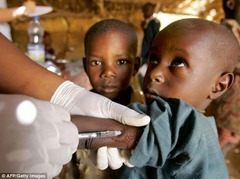
LDCs

answer
Countries located on the edge of the world core that are seeking improved conditions for their residents through economic growth
question
life course theory of migration
answer
A theory that states that the interaction effects of family life course events (became married, had a child, became divorced) with migration have important repercussions on a society
question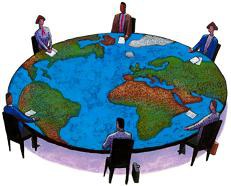
lingua franca

answer
A language that is not part of the culture of the country but is one that is informally agreed upon as the language of business and trade
question
localization economies
answer
The cost savings for individual industries as a result of grouping together in a certain location
question
locational interdependence theory
answer
A theory developed by Harold Hotelling that suggests that competitors in their effort to maximize sales, will try and limit each other's territory by locating close to each other in the middle of their combined customer base
question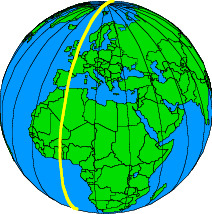
longitude

answer
The distance east or west from the Prime Meridian, measured in degrees, minutes, and seconds using lines of identical longitude, called meridians
question
long-lots system of land survey
answer
A land survey method used by French and Spanish charter groups in North America in which long lots of land extended outward from river frontage
question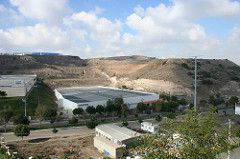
maquiladora

answer
A foreign-owned assembly company located in the United States-Mexico border region in order to take advantage of cheaper labor, favorable tax breaks, and lax environmental regulations
question
material culture
answer
The artifacts (tangible things) of a culture such as tools, weapons, and furniture
question
mediterranean agriculture
answer
A form of specialized agriculture in which crops grown in a Mediterranean climate of warm year-round temperatures and sunny summers (grapes, olives, figs, dates, citrus fruits, etc.) are grown
question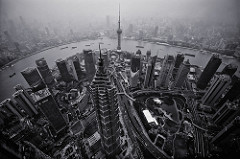
megacity

answer
A metropolitan area with a total population of over 10 million people according to the United Nations
question
megalopolis

answer
A group of supercities that have merged together into one large urban area
question
mentifact
answer
Nonmaterial parts of a culture such as language, religion, artistic pursuits, folk stories, myths, etc.
question
mental map
answer
A map in one's mind
question
metes-and-bounds land survey system
answer
A land survey system used in North America where natural boundaries such as rivers, trees, and large rocks were used to mark land boundaries
question
Meridian
answer
A line of identical longitude
question
migration
answer
The movement of humans from one place to another
question
Millenium Development Goals
answer
The United Nations mandate of eight development goals designed to eliminate poverty by the year 2015
question
model
answer
A simplified generalization of something in real life
question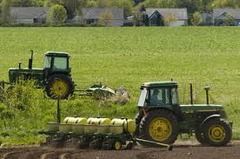
commercial agriculture

answer
Large-scale agricultural production for profit using specialized methods, technologies, and genetically engineered seeds
question
monoculture
answer
The production of a single crop for commercial markets (corn, wheat, rice, etc.)
question
monotheism

answer
A religion that worships one God
question
multiple nuclei model
answer
A model of urban land use developed by Harris and Ullman based on separated and specialized multiple nuclei
question
multiplier effect
answer
The ratio of non-basic jobs to basic jobs that shows the effect basic job creation has on the creation of non-basic jobs
question
nation

answer
A unified group of people with a common culture
question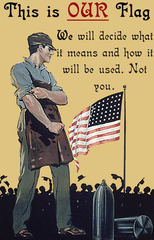
nationalism

answer
A strong love of, and loyalty to, one's country
question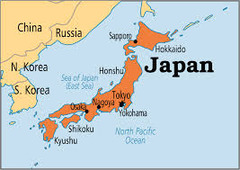
nation state

answer
A state in which over 90 percent of the population is comprised of a specific culture or group of people
question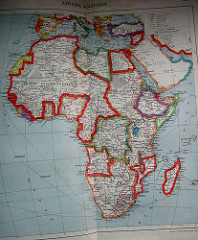
neo-colonialism

answer
The periphery's continued exploitation by, and dependency on, the core in modern times even though they are no longer colonies
question
neo-Fordism
answer
The evolution of mass production into a more responsive system geared to the nuances of mass consumption by using flexible production systems that allow production processes to shift quickly between various products
question
New Urbanism
answer
An urban design movement that emphasizes the pedestrian-friendly return to earlier close-knit neighborhoods and a sense of community
question
non basic sector
answer
Goods and services produced by urban workers for people employed within the urban area
question
nonmaterial culture
answer
Mentifacts (language, religion, artistic purposes, folk stories, myths, etc.) and sociofacts (educational and political institutions, religious organizations, family structure, etc.) that comprise a culture
question
offshoring
answer
The practice of contracting with a third-party service provider in another country to take over or supervise part of the business operations
question
organic farming
answer
The process of producing good naturally without the use of synthetic fertilizers, pesticides, and other inputs
question
outsourcing
answer
The production of goods and parts abroad for sale in one's own country
question
pastoralism
answer
A form of subsistence agriculture in which animals are herded in a seasonal migratory pattern
question
pidgin
answer
A simplified language created by merging two other languages
question
perceptual region
answer
A region defined by feelings and prejudices that may or may not be true. A region derived from one's mental map.
question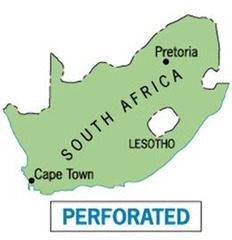
perforated state

answer
A state that totally surrounds another country, such as South Africa (which surrounds Lesotho) or Italy (which surrounds San Marino)
question
physiologic density
answer
The number of persons per unit of agricultural land
question
place
answer
Another word for location
question
place utility
answer
A person's satisfaction or dissatisfaction with a place
question
placelessness
answer
The loss of a place's unique flavor and identity due to the standardizing influence of popular culture and globalization
question
plantation agriculture
answer
Monocropping, or planting a single crop for profit, is a specialized form of agriculture and is usually located near the former colonial markets
question
polyculture
answer
The production of several crops
question
population density

answer
The number of persons per unit of land area
question
population momentum
answer
The propensity for a growing population to continue growing even through fertility is declining because of their young age distribution
question
population pyramid

answer
A model that shows the composition of a population by age and sex. Also called an age-sex pyramid.
question
polytheism

answer
A religion that worships more than one God
question
pop culture
answer
The ever-changing cultural norms associated with a large, diverse group of people who are very influenced by mass media, mass production, and mass merchandising
question
possibilism
answer
The theory that the physical environment merely establishes limits of what is possible on the human population
question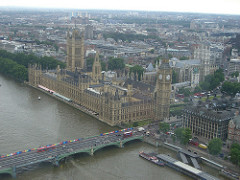
primate city

answer
A city that is at least twice as large as the next largest city and more than twice as significant (not just the largest city in a country)
question
primary economic activity
answer
An economic activity that takes something from the ground (farming, mining, forestry, etc.)
question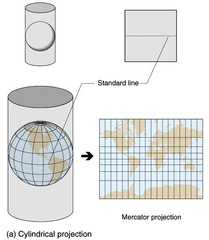
projection

answer
A type of map based on representing a round Earth on a flat piece of paper with the resulting inaccuracies determining the best use of the particular type
question
prorupt state/protruded state
answer
A state, such as Thailand or Myanmar (Burma), that is round in shape with a large extension
question
protolanguage
answer
A reconstructed ancestral language that forms the basis for a language family
question
public housing
answer
Government-constructed and regulated low-income housing in urban areas
question
pull factor
answer
Factors such as better job opportunities or a more pleasant climate that "pull" or attract a migrant to a new area
question
push factor
answer
Factors such as war, high crime, or overcrowding that "push" a migrant to a new region
question
quaternary economic activities

answer
Economic activities that deal with information and knowledge processing
question
quinary economic activities
answer
The economic activities that deal with the highest-level of decision-making in both the government and private sectors of the economy
question
race
answer
A group of people with a common biological ancestor
question
rank-size rule
answer
The rule proposed by Zipf that states that if all cities in a country are placed in order from the largest to the smallest, the second largest city would have about 1/2 the population of the largest city, the third largest city would have about 1/3 the population of the largest city, the fourth largest city about 1/4 the population of the largest city, etc.
question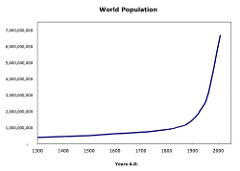
natural increase rate

answer
the crude birth rate minus the crude death
question
rectangular land survey system
answer
A system using rectangular grid divisions to divide new land settlements after The United States won independence from England
question
region

answer
An area that displays a common trait such as culture, government, language, landform, etc.
question
relative location
answer
The location of a place in relation to the location of other places
question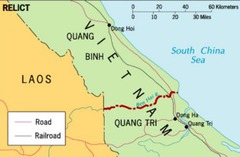
relict boundary

answer
An old boundary between countries that is no longer used
question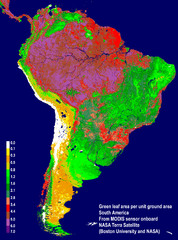
remote sensing

answer
The process of detecting the nature of an area from a distance
question
replacement level
answer
The population level necessary to assure the population continues to replace itself
question
representative fraction
answer
The scale of a map represented as a ratio or fraction, such as 1:25,000
question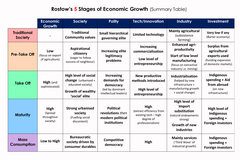
Rostow's model of economic development

answer
A model of development for countries based on stages of economic growth and modernization. Also called modernization theory.
question
rural to urban migration
answer
The movement of people from the countryside to the city usually in search of economic opportunities (jobs) and a better life (both "pull" factors of migration)
question
scale
answer
The degree of generalization on a map. Scale can also mean the size of a unit on a map as a ratio of its size on the map to the same units on the Earth's surface.
question
secondary economic activities
answer
Economic activities that involve the processing of raw materials into finished goods by manufacturing
question
sector model
answer
The model of urban land use developed by Hoyt that shows urban growth in pie-shaped wedges, or sectors, based on transportation improvements
question
secularism
answer
The rejection of all religious beliefs and is spreading rapidly in certain areas of the world such as Europe
question
segregation
answer
The physical separation of two groups of a population (in the United States this is usually based on race)
question
sense of place
answer
The special perception we have of a certain place based on our feelings, emotions, and associations with that place
question
separatism
answer
The striving to become separate from a larger group
question
Second Agricultural Revolution
answer
An agricultural revolution starting in the 17th century that increased efficiency of crop production and distribution through use of new machinery
question
sedentary
answer
The condition where a group of humans is able to live in one location and grow crops and raise animals
question
sequent occupance
answer
The concept that successive societies leave their cultural imprints on a place, each contributing to the cumulative cultural landscape
question
shamanism
answer
A form of tribal, or traditional, religion that reveres a particular person, the shaman, as one with special healing or magic powers
question
shifting agriculture
answer
The form of subsistence agriculture in which crops are grown in different fields on a rotating basis
question
site
answer
The physical location of a place
question
situation
answer
The location of a place based on its relation to other places
question
specialty farming
answer
Farming that grows crops to provide small upscale niche markets with fresh produce
question
sociofacts
answer
The educational and political institutions, religious organizations, family structure, etc. that make up the nonmaterial aspects of a culture
question
sovereignty
answer
The internationally recognized exercise of a country's power over its people and territory
question
space
answer
The extent of area that is occupied by something
question
spatial diffusion
answer
The spread of something over time or space
question
spread effects
answer
Benefits to the peripheral region that accrue because of economic development in the nearby core region
question
state
answer
A country, or political unit in which the Earth is divided
question
step migration
answer
The series of small moves of a migrant to reach a destination
question
subsequent boundary
answer
A boundary drawn after a cultural landscape is already in place
question
subsistence agriculture
answer
A form of agriculture in which everything that is produced is consumed by that population. Forms of subsistence agriculture including shifting, swidden/slash-and-burn, and intensive subsistence
question
suburbanization
answer
The movement of people from urban core areas to the surrounding outer edges of the cities
question
supercity
answer
A very large city
question
superimposed boundary
answer
A boundary forced on a territory after existing boundaries are already in place
question
supernationalism
answer
The association of three or more states for mutual benefit
question
sustainability
answer
The principle that we must meet our present needs without compromising the ability of future generations to meet their needs
question
sustainable development
answer
The concept that it is possible to balance economic growth without jeopardizing the environment and equitable human access
question
swidden agriculture
answer
The form of subsistence agriculture in which crops are grown in different fields on a rotating basis. Also called shifting agriculture or slash-and-burn agriculture
question
syncretism
answer
The birth of a new culture trait from blending two or more cultural traits
question
taboo
answer
A potent form of cultural barrier that prevents certain habits or new ideas from establishing themselves in a society due to already-established prohibitions, customs, and rules
question
terrorism
answer
The use of violence in a controlled and intentional way to force attention attention onto issues
question
tertiary economic activities
answer
Economic activities that provide services
question
tipping point
answer
The point at which a critical number of minority inhabitants is reached and triggers an outmigration of charter group
question
transculturation
answer
An equal exchange of traits or influence between two culture groups occurs
question
transhumance
answer
The constant movement of herds in a set seasonal pattern of grazing
question
transnational corporations (TNCs)
answer
Global corporations that have facilities and processes spread among several companies in a global assembly line
question
truck farming
answer
Commercial gardening and fruit farming in the United States
question
uneven development
answer
The huge contrast of wealthy neighborhoods and poor neighborhoods found within urban areas and the continuing uneven allocation of funds to foster this condition
question
uniform region
answer
A region with a high level of consistency in a certain cultural or physical attribute (also a formal region)
question
unitary state
answer
A state with a strong central government that retains most of the political power
question
universalizing religion
answer
A religion in which anyone can become a member
question
urbanization
answer
The rapid growth of, and migration to, large cities
question
urban renewal
answer
The process of identifying properties in inner city neighborhoods that are then acquired, cleared of residents and structures, and handed over to private investors or public agencies for construction of parks, schools, or new housing
question
urban sprawl
answer
A separate-use system of residential housing neighborhoods on the outskirts of urban areas that do not contain retail activities. Also called conventional suburban development (CSD)
question
urban subsistence farming
answer
The cultivation of small city gardens for food in the cities of the developing world
question
vernacular region
answer
A popular region that is named for the way people perceive it
question
vertical integration
answer
Contracts between farmer and producer in the agricultural industry
question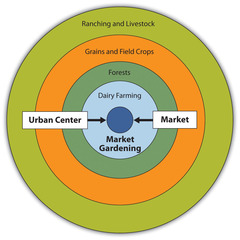
Von Thünen's Agricultural Land-Use Model

answer
A model of agricultural land use that illustrates the relationship between the cost of land and transportation costs involved in getting a product to market
question
world city
answer
A global city that serves as an important linkage or connection point in the global economic system
question
world systems theory
answer
The theory, developed by Immanual Wallrstein, that there is only one world system in which all nation-states historically compete for capital and labor
question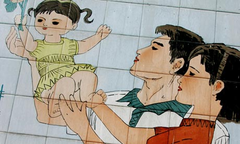
zero population growth

answer
A condition is which births plus immigration equals deaths plus emigration for individual countries



